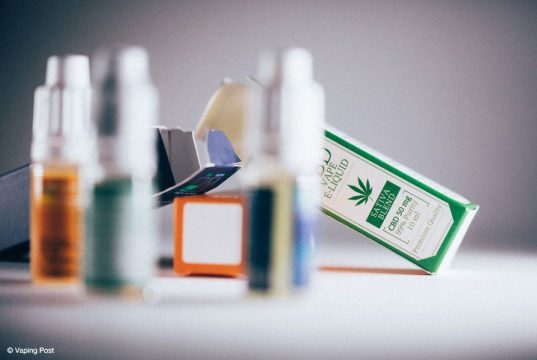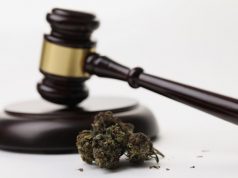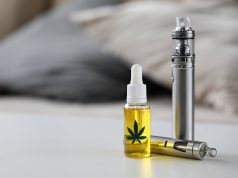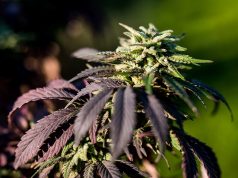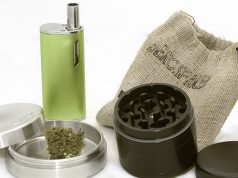Subject to controversy, cannabidiol – which is more often referred to as “CBD” – is increasingly edging into the e-liquids market, but it’s weighed down by a bad reputation. The French E-liquid Laboratory (Ingésciences) conducted a literature review and emission analyses to learn more. Dr. Maud Mercury, director of the LFEL’s analysis laboratory, and Jérémy Sorin, the engineer in charge of the study, answered our questions.
From an analytical point of view, the identification and characterization of CBD is carried out using our chromatographic equipment. For the vapour emissions, we relied on our U-SAV vaping machine to generate the aerosol and then on our chromatographic equipment for the analysis of its composition. I used search engines for scientific articles for the literature review, and I was surprised by the magnitude of the data available – I had no idea how well CBD was studied. For this summary, I have drawn on some 100 publications concerning CBD.
When were the first studies on CBD conducted?
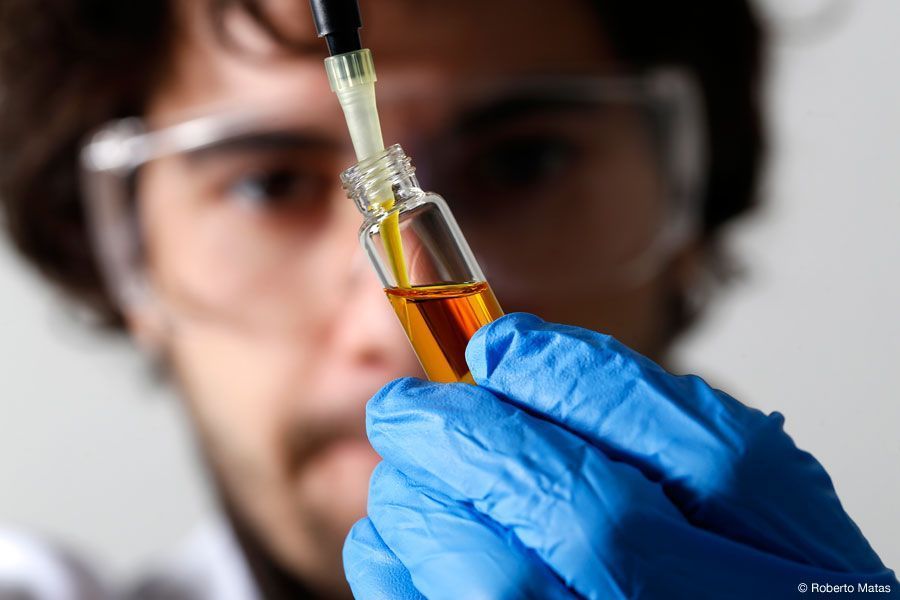 CBD was discovered and isolated in 1940 by Adams and his colleagues, but its chemical structure was not determined until 1963. The number of studies on the subject exploded in the 1990s and then in the 2000s. This is for two reasons: the first is the relaxation of legislation – particularly in the United States – on cannabis and cannabinoids. The second is the understanding of the mechanism of action of cannabinoids (receptor system) that has shown that THC is far from being the only cannabinoid with pharmacological properties. Today, there are reportedly over a hundred cannabinoids identified. THC and CBD are the most studied because, historically, they were discovered first. They are also the two cannabinoids most found in Cannabis sativa L.
CBD was discovered and isolated in 1940 by Adams and his colleagues, but its chemical structure was not determined until 1963. The number of studies on the subject exploded in the 1990s and then in the 2000s. This is for two reasons: the first is the relaxation of legislation – particularly in the United States – on cannabis and cannabinoids. The second is the understanding of the mechanism of action of cannabinoids (receptor system) that has shown that THC is far from being the only cannabinoid with pharmacological properties. Today, there are reportedly over a hundred cannabinoids identified. THC and CBD are the most studied because, historically, they were discovered first. They are also the two cannabinoids most found in Cannabis sativa L.
When were the first articles on cannabis vaporization published?
CBD does not have a psychoactive effect. There are studies in the literature on the vaporization of CBD using the plant material itself. However, we did not find them relevant because they are not specific to CBD alone. On the other hand, we have read recent studies studying the vaporization of pure CBD in its solid form. The common conclusion of these studies is that CBD is fully vaporizable in this form and at relatively low temperatures.
How are CBD and THC different?
CBD alleviates stress or anxiety.
CBD and THC have very similar chemical structures. They have common and very useful pharmacological properties from a therapeutic point of view – such as analgesic or anti-inflammatory properties. However, their difference from each other really lies in their side effects as well as in what people use them for. For example, CBD – unlike THC – has very few proven side effects. In our research, we only counted two for CBD and more than ten for THC. But the fundamental difference between these two molecules is that CBD does not have a psychoactive effect. Therefore, people do not use CBD for any euphoric effects – like they do with THC and cannabis. Their goal is instead to improve a person’s well-being.
What are the effects of CBD?
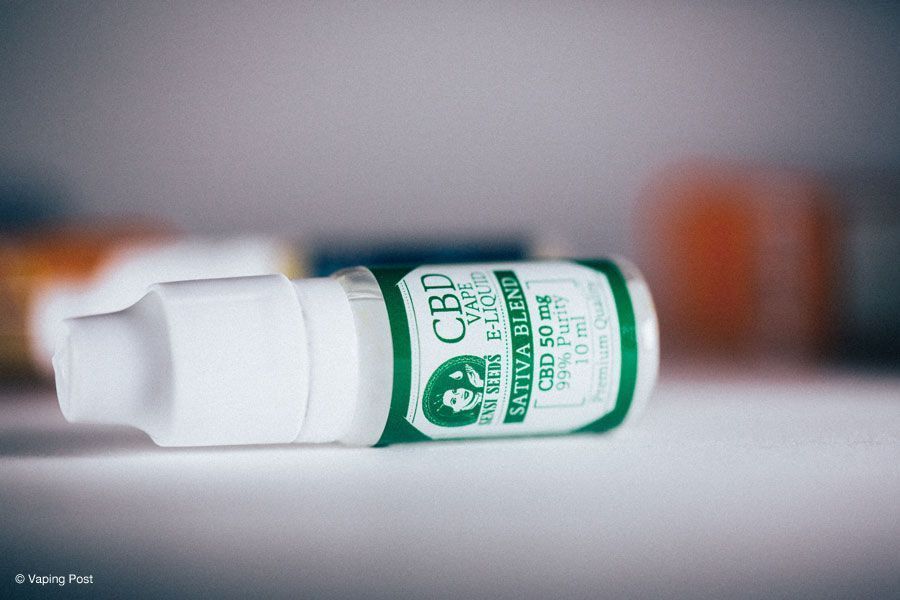
CBD has several pharmacological effects – some more proven than others. The effects we have identified as the most interesting concern its anxiolytic, antipsychotic and analgesic properties. This is what makes it possible for CBD to alleviate stress or anxiety. It is interesting to note that CBD also reduces the intensity of the psychoactive effects of THC. Some current studies show that CBD may help reduce withdrawal symptoms associated with addiction. For personal vaping, this is obviously a very interesting feature, if proven, from the point of view of smoking and nicotine withdrawal. Finally, CBD also has sedative, neuroprotective, anti-epileptic and anti-dystonic (muscle tone disorders) properties.
What are its negative effects?
CBD has an irritating effect, much like nicotine. This can be limiting when vaping, depending on the sensitivity of certain people.
Do you get a “hit” similar to nicotine?
Although it is somewhat reminiscent of a “throat hit” in terms of its location, the effect lasts longer with CBD – from 5 to 10 seconds.
And the other negative effect?
CBD may cause mild drowsiness in certain people who are sensitive to the molecule.
These effects depend on the concentration of CBD in the e-liquid. Is there a maximum legal dose?
Currently, there are no legal limits. Its limit comes from what is feasible in formulation, since once it reaches a certain concentration, the CBD can no longer be dissolved in e-liquid. Moreover, it is difficult to dissolve in high proportions of vegetable glycerine.
What is the benefit of using inhaled CBD?
Our goal here is to highlight the therapeutic properties of CBD – not to throw it in the same box as THC and cannabis smokers.
Its interest lies in its bioavailability. When we inhale a molecule, our bodies do not absorb everything: one part is exhaled into the atmosphere, the other deteriorates before it is absorbed. The percentage of the molecule absorbed by the body relative to the total amount of the molecule consumed is called bioavailability. For CBD, when injected intravenously, bioavailability is by definition 100% – this falls to approximately 20% by inhalation and 8% by ingestion. As such, with inhalation there is a greater absorption of the molecule consumed than with ingestion, along with a faster transmission of sensory signals to the brain (greater than an intravenous injection, for example). Finally, CBD combines rather well with vaping, vaporizing at temperatures that are in the same orders of magnitude as what can be achieved with a personal vape.
Can it be recommended to cannabis smokers so they can be less at risk?
The current products on the market are indeed highly targeted at cannabis smokers. This is visible in the use of “cannabis flavours”, but also in very explicit marketing categorizing it as “cannabis” with green leaves, etc. This is a very sensitive issue to which a clear response must be made. Personally, I think that the inhalation of CBD is useful for people who have anxiety, stress, nervousness or mild sleep disturbances without these being pathological disorders. In short, it is important to differentiate between medical use and more recreational use that affects the general well-being of a person, whether or not he or she smokes cannabis. In conclusion, our goal here is to highlight the therapeutic properties of CBD – not to throw it in the same box as THC and cannabis smokers.
So, what should a CBD e-liquid seller say to a cannabis smoker who wants to switch to CBD e-liquids?
CBD is still associated with the recreational use of smoked cannabis (i.e. THC) today, even though it is not used for the same purpose.
They should be asked if they are looking to stop or reduce their consumption and if so, inhaling CBD may help them address the anxiety and stress resulting from withdrawals, but it is not a miracle product. Now, if the client is looking for the same psychoactive effects as THC in vaping CBD, they will be disappointed, as CBD does not have a psychoactive effect. On this point, the opinion of the scientific community is clear: CBD has no psychoactive effects.
Why is CBD still suspected of being psychoactive?
One of the main reasons is that CBD is still associated with the recreational use of smoked cannabis (i.e. THC) today, even though it is not used for the same purpose. There is a huge amount of work to be done raising awareness on this, especially in France where the subject is still taboo. It will need to be explained and re-explained that CBD does not have the psychoactive effects of cannabis but THC does; that CBD and smoked cannabis are used differently and that they do not have the same effects. Finally, the fashion of printing cannabis leaves on the label of a CBD e-liquid does not really help, of course! (smile).
Could it be dangerous if inhaled?
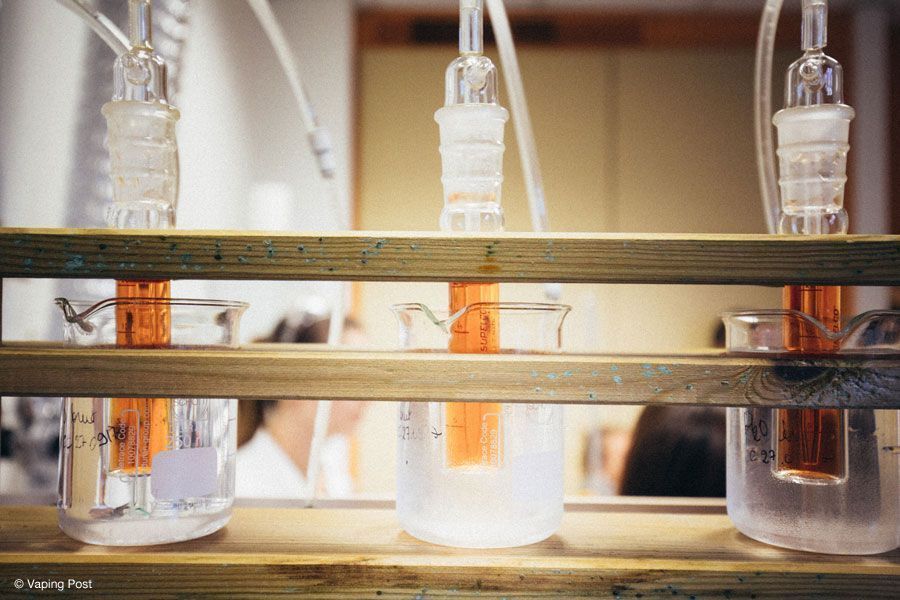
Other than the irritation and drowsiness, there is no inherent toxicity at the concentrations considered. All the more so as the quantities contained in an e-liquid are much lower than the quantities mentioned in the studies we found.
Does the molecule remain stable when heated?
There are only one or two studies that show this. But at the temperatures we’re using, we can assume it’s stable. We carried out tests with our U-SAV vaping machine in rather extreme conditions, close to a dry hit, and we found no products from the deterioration of CBD-related emissions. But we’re continuing the tests under different conditions to make sure.
Can you become addicted to CBD?
We do not have information on the level of CBD in CBD-enriched hemp oil nor on the possibility of it being contaminated by THC.
Several studies related to smoked cannabis addiction show that THC leads to the release of dopamine (pleasure and reward hormone), in a similar way to nicotine. For example, smoked cannabis users associate the psychoactive effects of THC with the pleasure generated by the release of dopamine. They will therefore seek to reproduce these effects in order to once again feel this sense of pleasure. For CBD, there are no psychoactive effects and no generation of dopamine. Therefore, the addictive nature of CBD should be extremely limited.
There are several different types of CBD e-liquids. Which ones should we prefer?
There are e-liquids that use CBD powder, sold by suppliers who guarantee the purity and absence of THC – this is also the most widely used raw material. But there are also liquids with hemp oil enriched with CBD – some in France and a lot abroad. It is an oil extracted from cannabis, a viscous solution that may contain THC, CBD, and some compounds not fit for inhalation. Some manufacturers use it, because it is much cheaper than pure CBD. The problem – apart from compounds not fit for inhalation – is that neither the level of CBD in the compound nor any possible THC contamination is known without chromatographic analysis. We consider that this oil extracted from cannabis can unfortunately undermine the reputation and strong potential of the CBD molecule.
How can you tell the difference between these two products?
In some cases, all you have to do is look: there will be a clearly visible centimetre of oil above the PG/VG base. It also has the characteristic taste of cannabis resin, where pure CBD has no taste. In addition, hemp oil e-liquids are generally cheaper than CBD products, and the rate statements and units of measurement on the product label are often incorrect.
Should the where the CBD comes from be mentioned on the vial?
We see no point in combining CBD and nicotine because their purposes are different.
The CBD’s origins should be listed, but as it is not regulated, this is not required. We advise professionals and consumers to choose e-liquids where the CBD’s origins are listed. Or to select manufacturers or distributors who provide a certificate of analysis with traceability and CBD purity information for the production batch related to the vial. The use of molecules with pharmacological properties is already quite problematic with e-cigarettes – all the more reason to look for credentials when using them.
Is there a problem using it along with nicotine?
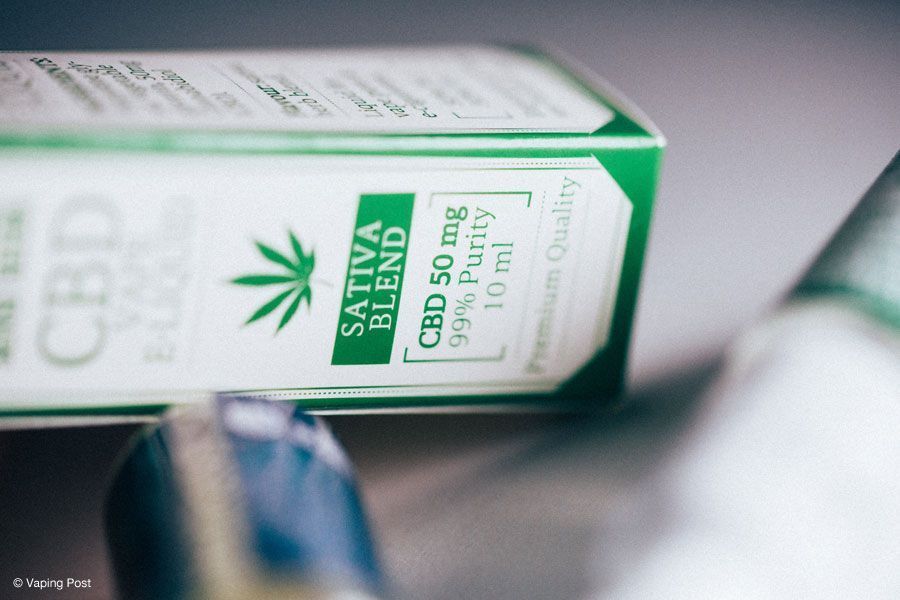
Technically, this shouldn’t be a problem, but we don’t see the need for it because their purposes are different. Vapers inhaling nicotine e-liquids are usually looking to stop smoking. Anyone looking to relax will use a CBD e-liquid instead. I am a vaper, and I have a clearomizer dedicated to CBD, which I use when I feel the need, or at very specific times during the day – typically in the evening to relax – and next to that I have my “all day” clearomizer that I use to avoid smoking cigarettes. Finally, we did not find any sources in the literature that show a lack of synergy between the two molecules. Nicotine is a stimulant much like caffeine, which is contrary to the effects sought by using CBD. At the moment, in my opinion, there are too many questions and too little interest in combining the two.
Are the effects of CBD extremely different between an e-liquid dosed at 3 mg/ml and another dosed at 60 mg/ml?
In terms of effects, one notion comes into play – the subjectivity of perception from one person to another. A consumer of CBD e-liquid at 60 mg/ml on a dripper may not perceive any effects while another vaper using a standard clearomizer may perceive more than sufficient effects by consuming 10 mg/ml. As with the nicotine hit, there is no general rule – it depends on the sensitivity of each person, as well as on whether or not they have a habit of consuming cannabinoids. If a person is not very sensitive to the effects, it is recommended that they keep the vapour in their lungs for longer, and to inhale larger puffs in order to increase the bioavailability of the molecule.
There are CBD e-liquids in 100, 300 or 600 mg – wouldn’t it be more accurate to indicate the concentration rather than the dose on the vials?
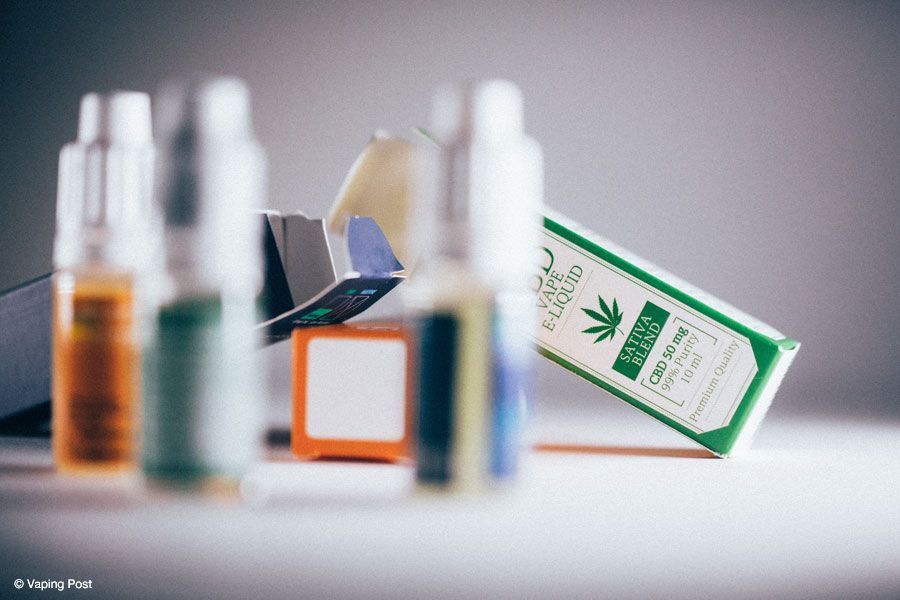
Yes, the labelling is confusing, especially in the individual vaping sector, which has historically reported concentrations of molecules in mg per ml, like with nicotine. Since their arrival on the market, manufacturers have been indicating the amount of CBD in the vial (in mg), like on the labelling of tablets to be taken. However, with e-liquids (solutions), we should be talking about CBD in a volume concentration – i.e. 10 mg/ml, 30 mg/ml or 60 mg/ml – which would make it easier for the consumer to read and understand the labels.
What is your opinion on CBD crystals for DIY use?
Mentalities must evolve for CBD, whose main criticism is just that it is extracted from the plant Cannabis sativa L.
In view of the complexity and certain incompatibilities of the CBD formulation with other molecules (essentially aromatic), we recommend that consumers tempted by the DIY aspect make sure they are fully informed beforehand – via forums, social networks or via the R&D laboratories that study this subject!
What conclusions did you draw from your study and analysis?
Although CBD has similar chemical structures, it is totally different from THC in terms of its use, the purpose of its consumption and the pharmacological effects sought (no psychoactive effects with CBD). Moreover, the nature of the molecule and its vaporization properties justify the appearance of CBD e-liquids, as personal vapes appear to be adapted to the consumption of this type of molecule. There is a very wide range of options for this type of product, but not all of them are favourable to being used in inhalation – consumers must therefore remain vigilant in the selecting their products.
Our role as a research centre is to raise awareness in the media, to inform sellers and consumers on a subject that is sorely lacking in popular scientific information accessible to the general public. Mentalities must evolve for CBD, whose main criticism is just that it is extracted from the plant Cannabis sativa L. The study that we are going to publish soon on our website should bring an objective perspective on the subject.
Interview published in PGVG magazine #22, November 2017. Our thanks to Jérémy Sorin and Maud Mercury for answering our questions.
For more information, see the Ingésciences website: https://ingesciences.fr/en/


